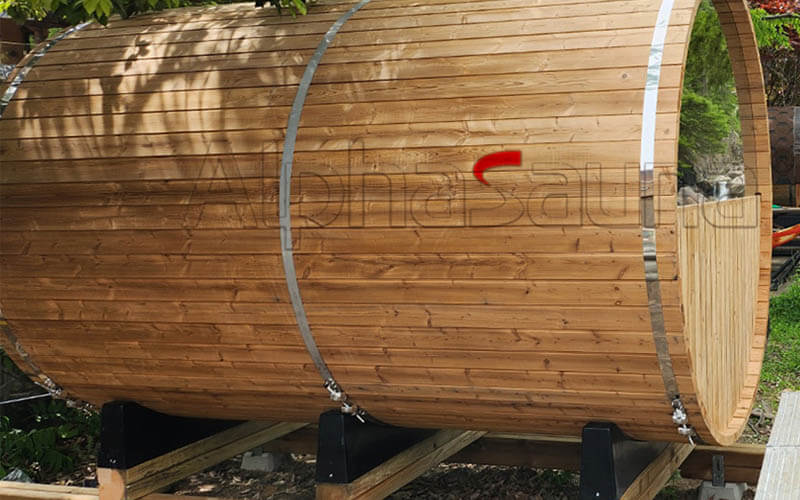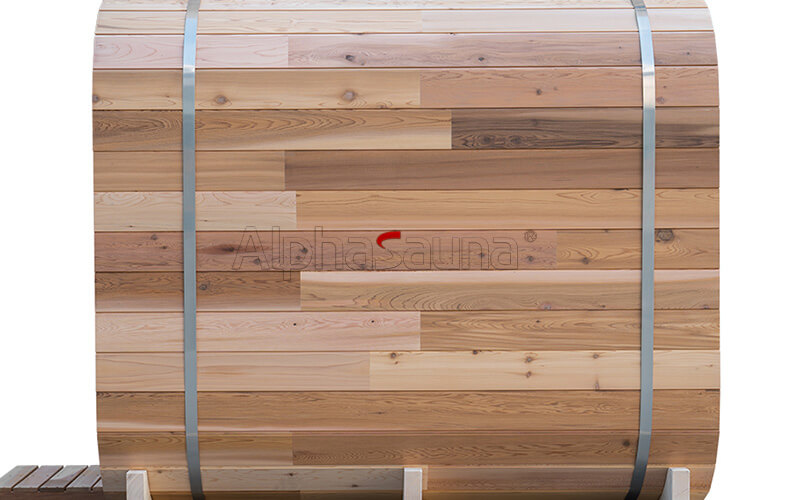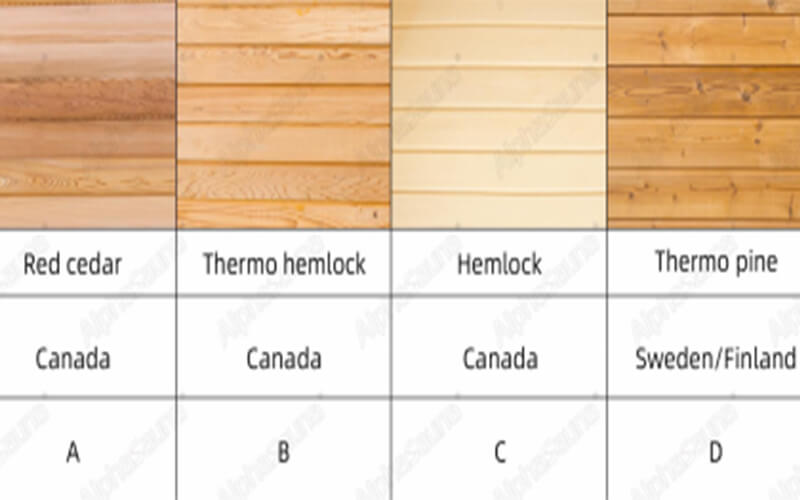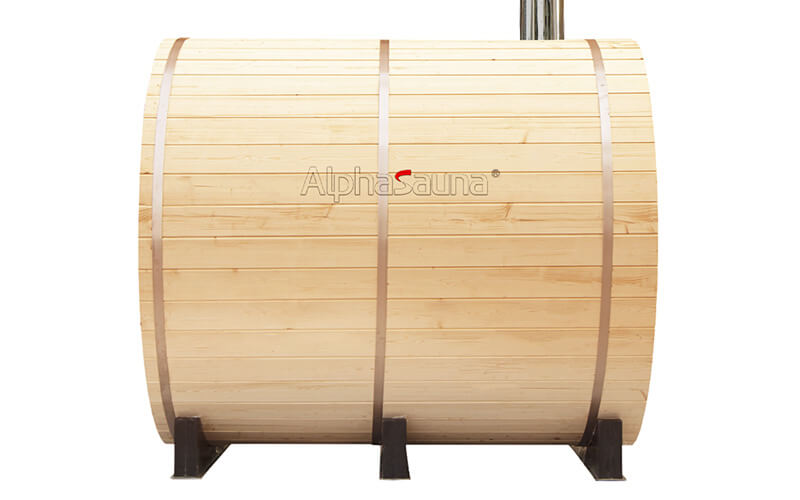As sauna culture continues to spread, more and more people around the world are embracing sauna as a healthy activity.
Many individuals opt to purchase sauna rooms to enjoy the sauna experience in the comfort of their own homes, while
others prefer to visit public sauna facilities. When it comes to selecting a sauna room, many people may feel unsure about
which type of wood is best suited for their needs. This article will introduce the pros and cons of different types of wood
used in sauna construction, addressing the question of how to choose the best sauna wood.
Choosing a sauna room constructed from different types of wood not only affects aesthetics but also durability and overall
sauna experience. Therefore, to ensure a comfortable sauna experience and a long lifespan for the sauna room, it's
important to carefully consider the type of wood used.

Understand The Relationship Between Wood And Sauna
The selection and use of wood in sauna rooms are crucial, as they not only influence the aesthetic appeal of the sauna but
also affect its lifespan and sauna experience. Sauna rooms are characterized by high temperatures and humidity, requiring
wood that can withstand such conditions. Inappropriate wood choices may result in structural issues or the release of
harmful substances. Many sauna rooms are constructed using wood, which is better suited to sauna environments compared
to other materials. Whether it's a traditional sauna or an infrared sauna, both are constructed using wood to enhance the
sauna experience through the unique properties of the wood.
How To Choose The Best Wood For Sauna?
Choosing the best wood for a sauna room requires considering various factors such as the properties of the wood and the
sauna room environment. Different types of wood have their own advantages and disadvantages. Here are the factors to
consider when selecting the best wood:
1. Heat And Moisture Resistance:
The sauna room environment is typically hot and humid, so the wood must be able to withstand these conditions without warping or cracking.
2. Antimicrobial Properties:
Choosing wood with natural antimicrobial properties can reduce the growth of bacteria and fungi, enhancing sauna safety and hygiene.
3. Thermal Conductivity:
Selecting wood with lower thermal conductivity can prevent the risk of burns by reducing the transfer of heat from the sauna room to the body.
4. Decay And Insect Resistance:
Opting for wood with natural resistance to decay and insects can effectively prevent wood corrosion and insect infestation.
5. Absence Of Harmful Chemicals:
It's not recommended to use chemically treated wood, as it may release harmful gases in high-temperature environments, affecting the sauna experience and user safety.
6. Comfort And Appearance:
The texture and color of the wood enhance the sauna room's aesthetics, increasing visual appeal and creating a warm and comfortable environment.
7. Unique Aroma:
Some types of wood emit relaxing and pleasant natural fragrances when heated, enhancing the sauna experience.
8. Waterproofing:
Choosing waterproof sauna wood can prevent moisture from causing wood rot and damage, extending the sauna room's lifespan.

What Are Sauna Wood Types?
Cedar
Cedar wood is renowned for its durability and aromatic qualities. Cedar is a premium wood commonly used in construction,
furniture, and interior decoration. It possesses unique characteristics and advantages, making it highly favored and
capable of providing a relaxing and enjoyable sauna experience.
There are many types of cedar wood, including Western Red Cedar, Eastern White Cedar, and Lebanese Cedar. Cedar has
a warm reddish hue with distinct and clear grain patterns. Its surface also features the presence of knots, adding To Its Natural Appeal .
Cedar exhibits excellent durability and is resistant to bacteria, decay, and insects. It also boasts good stability and is less
prone to warping and cracking in high-temperature, high-humidity environments. Cedar's distinctive aroma
contributes to relaxation and enhances the sauna experience.

Western Red Cedar
Western Red Cedar is native to certain regions of North America and Asia, known for its tall, straight trunks. It is favored
by those who appreciate a soft appearance and fresh scent. Western Red Cedar holds significant value in architectural
applications and is a great choice for construction materials.
The color of Western Red Cedar is relatively light, typically ranging from light brown to pale red, with warm undertones.
It features fine, uniform grain patterns and a relatively smooth surface with few knots. Western Red Cedar has a moderate
density, making it both strong and lightweight, suitable for processing and installation, as well as providing ample structural
support for sauna rooms.
One of Western Red Cedar's notable advantages is its excellent resistance to decay and stability, making it highly suitable
for sauna environments. Its stability ensures minimal risk of warping or cracking in the high-temperature, high-humidity
conditions typical of saunas. While moist heat environments can corrode wood, Western Red Cedar's natural resistance to
decay effectively protects against such corrosion in sauna environments. Western Red Cedar emits a subtle woodsy aroma,
particularly noticeable in high-temperature environments, which is appealing to those sensitive to strong odors yet appreciate
a mild fragrance. With its low thermal conductivity, Western Red Cedar remains comfortably warm in sauna environments,
reducing the risk of burns for users. While Western Red Cedar can be used for sauna construction, its durability may not match
that of Cedar, potentially resulting in a shorter lifespan for sauna rooms.
Pine Wood
Pine wood is the most common choice for sauna rooms and is widely distributed throughout the Northern Hemisphere.
Similar to Cedar, it grows rapidly with tall, straight trunks. Sauna rooms constructed from pine wood evoke a natural atmosphere
and color palette, making them suitable for individuals who appreciate a natural ambiance.
The color of pine wood is typically light, ranging from creamy white to pale yellow, with a tendency towards white, turning
slightly yellow after heat treatment. Pine wood features distinct grain patterns, presenting natural wood textures and knots,
exuding a rustic feel of nature.
Compared to other sauna woods, pine wood is relatively affordable. It possesses good stability and durability, with minimal risk
of warping or cracking in the high-temperature, high-humidity conditions typical of saunas. While not exceptionally hard,
pine wood still offers decent durability. However, pine wood's moisture resistance and corrosion resistance are not as good
as other woods. Pine wood is susceptible to damage in the moist environment of sauna rooms, but appropriate preservation
treatments can enhance its longevity in sauna room usage.
Eucalyptus
Eucalyptus wood has a moderate density and is relatively lightweight, making it suitable for furniture and decorative items.
The aesthetic appeal and hardness of eucalyptus wood contribute to the beauty and durability of sauna room construction,
providing users with a comfortable and long-lasting sauna experience.
Eucalyptus wood typically ranges in color from light yellow to deep brown, imparting a natural and rustic feel. Its grain
patterns are usually straight, evoking a sense of naturalness. Eucalyptus wood generally lacks a noticeable odor, although
it may occasionally emit a subtle natural wood fragrance. The stability of eucalyptus wood may not be as good as
other woods. If choosing eucalyptus for sauna room construction, special treatment and regular maintenance are necessary
to prolong the sauna room's lifespan. Eucalyptus wood is also relatively more expensive than other woods, so ensuring
an adequate budget is important. Its primary advantages lie in durability and strength, making it suitable for prolonged sauna use.
Overall, each type of wood has its own advantages and disadvantages, bringing different characteristics to sauna rooms.
The choice of sauna wood can be made based on personal preferences, sauna room requirements, and budget considerations.

The Benefits Of Using Wood For Sauna
Wooden materials offer excellent heat insulation, stability, and aesthetics. In the high-temperature, high-humidity
environment of saunas, wood is resistant to deformation, providing durability and emitting a unique woody fragrance,
enhancing the sauna room's natural and comfortable ambiance.
Alphasauna places great emphasis on the comfort and appearance of our sauna rooms, aiming to provide users with a
relaxing, tranquil sauna environment and a naturally rustic sauna appearance. Our sauna rooms are constructed using
high-quality wood, ensuring sturdiness, durability, affordability, and innovative design. We offer a variety of sauna room types,
constructed from different wood materials, providing users with a diverse selection platform to meet their various needs.








